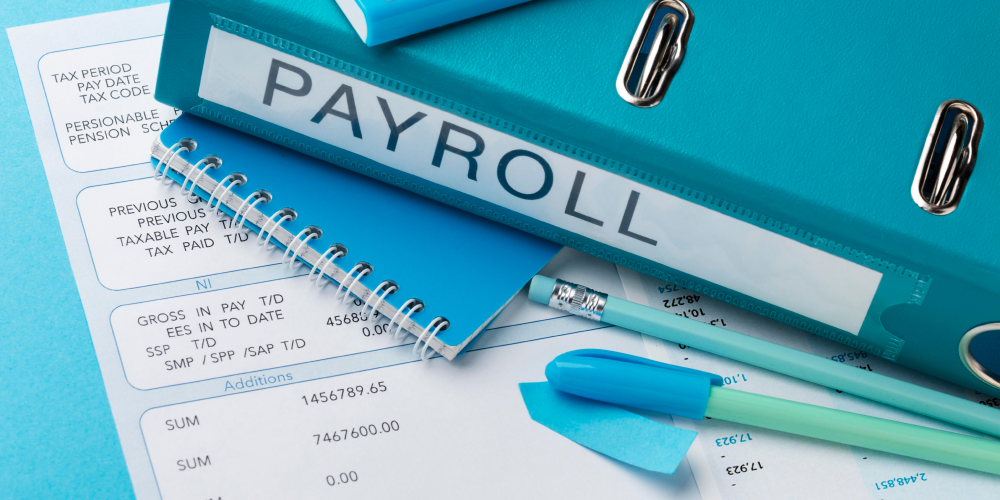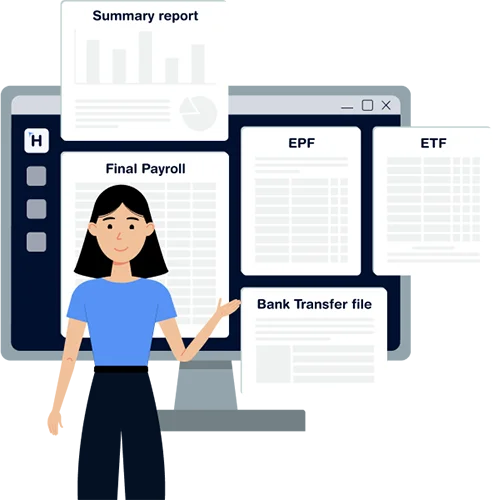What is EPF ?
Unlike government employees who have pensions to support them during retirement your employees will benefit from social security schemes like EPF, ETF and Gratuity. This article aims to provide you with the basic knowledge to handle EPF in your payroll. I will cover a few special scenarios and FAQs at the end
EPF stands for Employee provident fund established in 1958 under the Employees’ Provident Fund Act. It is a government body that enforces a social security system to look after the retired employees of the private sector and the government corporations.
How does it work?
Contributions to the EPF fund derive from both the employer and the employee. However, It is the responsibility of the employer to process and pay the contributions to the Fund.
Here, an amount equal to 12 % of the salary of the employee will be contributed by the employer and will be borne by the employer himself, while another amount equal to 8% of the salary will be taken out of the employee’s salary, ie, will be contributed by the employee. In total, 20% of the total earning of an employee will be contributed to this fund.
Now that you know how EPF works, let’s get started!
Registration of Employer
Your responsibility starts on recruitment of your first employee. Upon recruiting your first employee, before the expiry of 14 days, you (Employer) must complete the “D” form (Include link) in duplicate and post under registered cover to the Labour Office located closer to your business premises or directly to the Commissioner of Labour. The Commissioner of Labour will promptly send to you (Employer) a registered number with an English letter denoting his administrative district code.
This registration number starts with two letters of the English Alphabet indicating the administrative district, and the employer has to use the said number for all EPF queries relevant to his/her employment.
Important,
- The employer has to obtain the Employer Registration Certificate from the Department of Labour (LD).
- As a practice, LD sends the details of newly registered employers to the EPF Department (EPF/CBSL) to update employer details.
- Before making EPF contributions for their employees, every employer should ensure whether their details are available in EPF database maintained at the Central Bank (CBSL)
Registration of individual members
Once you complete the Employer registration you should register new employees in the Department of Labour within 14 days of his/her recruitment. You can do this by providing ‘A’, ‘B’, ‘H’ forms to new employees and duly submitting accurately filled forms to the Labour Department with the details of NIC in registration.
Assigning Employees’ Provident Fund number is also the responsibility of the employer. Once you receive your EPF Employer registration number. The member numbers must be allocated to the employees in numerical order, number 01 to the 1st employee and number 02 to the next and so on. Any member number that had been previously assigned to a particular member should not be allocated to a new employee under any circumstances.
For an example,
If the registered employment number in the Employees’ Provident Fund is 75357/A,
The 1st employee number will be 75357/A/01
The 2nd employee number will be 75357/A/02
Next, obtain the “B” Cards signed by the Commissioner of Labour and provide a “B” Card to every employee.
This concludes the registration process.
Processing EPF with your monthly payroll
Once you have successfully completed registrations, you should start processing EPF for your employees along with the payroll. As explained above, the total contribution is made up of 8% employee contributions and 12% employer contributions, which amounts to a total of 20% from the total earnings of an employee.
Let’s define what pay items are considered for total earnings,
- Salary, wages or fees
- Cost of living allowances, special living allowances and other similar allowances
- Payment with respect to holidays
- The cash value of cooked or uncooked food supplied by the employer to the employee (Determination of such value will eventually be made by the Commissioner of Labour)
- Food allowances
- Any kind of remuneration that may be specified
- Payments in the form of discounts (Commissions) piece rate payments and contract basis payments
Once you have calculated the EPF contributions for each of your employees, you should remit the Total EPF amount (a minimum of 20%)to the Superintendent of EPF, EPF Department, No. 13, Sir Baron Jayathilake Mawatha, Colombo 01 or P.O. Box 1299, Colombo 01, Sri Lanka.
EPF contributions with regard to a particular month should be received to EPF on or before the last working day of the following succeeding month. Otherwise, surcharges will be imposed against the employer according to the delay. There are purpose-built systems to handle payroll which also helps you calculate EPF monthly like Humanised.
There are two ways you can do this,
- E – Return System (Electronic Filing)
- Paper Based Submission (Manual System)
1. E – Return System (Electronic Filing)
Electronic submissions is the most hassle-free way of processing your EPF contributions. First Register e-Return system by submitting the Registration Form provided by EPF, directly to the EPF or through Licensed Commercial Bank(LCBs) in Sri Lanka that facilitates the payment of EPF contributions and submission of contribution details through online banking systems for their EPF paying customers.
The following steps are to be followed for paying contribution via the e-Return system.
Register in e-Return system by submitting the Registration Form provided by EPF, directly to the EPF or through Licensed Commercial Bank(LCBs) in Sri Lanka that facilitates the payment of EPF contributions and submission of contribution details through online banking systems for their EPF paying customers.
Reregister the employees with EPF according to their details appearing in the National Identity Cards.
Prepare the following text files as per the formats given by EPF/LCBs that facilitates their EPF paying customers through online banking facility;
a. Contribution Detail File:
This file provides the details of employees and their monthly contributions. All details of Sri Lankan employees should be duly filled as per their National Identity Cards (NIC) or as per Passport details, in case of a foreigner.
b. Payment Summary File
This file provides the details of the monthly contributions paid for the period specified in the respective Contribution Detail File.
Check the accuracy of the created text files with the assistance of EPF/LCBs be for e-submitting to the EPF.
Submit e-Returns(text files) through one of the following ways.
1. Online Banking Systems of LCBs:
Submit contribution details through online banking systems of LCBs. Currently, this facility is available with;
- Bank of Ceylon – i-Net System
- Commercial Bank of Ceylon PLC–COM BANK PAYMASTER System
- DFCC Bank – EPF System of DFCC
- Hatton National Bank PLC-PAYFAST System
- NDB Bank –NDB EPF System
- People’s Bank – EPF Netsystem
- Sampath Bank PLC – Vishwa Corporate System
- Seylan Bank – Seylan Bank EPF System
2. E-mail System:
Submit contribution and payment details to EPF through epfC3@cbsl.lk.
Remit the monthly contributions to the EPF through one of the following modes,
1. Online Payment
This facility is available for the employers who submit their e-Returns through online banking facilities of LCBs specified under (vi-a). Employers are facilitated to pay the EPF contributions directly through the online banking facilities of LCBs after uploading the respective contribution detail files to the system, successfully.
2. DirectDebit
Submit the Direct Debit Authorization Form certified by the employer’s bank to the EPF. This authorizes EPF to claim the respective funds at the end of each month from the employer’s bank. Both contribution detail and payment detail files should be submitted to the EPF through e-mail, within a minimum of five days before the last working day of the month. Employers must assure to provide sufficient amount of funds in their bank account enabling the EPF to claim the amount of funds in the contribution detail file on the last working day of the month.
2. Paper Based Submission (Manual System)
Employers having less than 50 employees have to fill the Form “C” in triplicate which can be obtained (free of charge) from the nearest Labour Office or can be downloaded from the EPF website to send the first contribution of all employees.Use the pre-printed Form “C” which will be sent by the EPF to the employer by post monthly to send contribution details.
When a new Employee is recruited, employee’s details should be included in Form “C” of the particular month. Member details should be duly filled as per the National Identity Card (NIC) of the new member.(The original copy of the Form “C” should be submitted to the Department of EPF and the second copy should be forwarded to the nearest Labour Office. The third copy should be kept with the employer for the future reference).
Remit contributions to the EPF through one of the following mode of payment,
EPF remittances through cash or cheque are accepted at all branches of the People’s Bank.
Duly fill the EPF payment cheque or cash slip which could be obtained at the People’s Bank.
Each EPF payment cheque/cash deposit slip should be submitted along with the Form “C” which includes a reference number issued by the Department of EPF for the specific month.
The reference number (Ref. No.) which is printed below the employer address in the Form “C”, should be written down in the particular area of the FPF cheque / Cash deposit slip.
Employer has to submit duly completed Form “C” which consists of the reference number along with EPF cheque/ cash slip to the People’s Bank Branch. Cheques and bank drafts should be drawn in favour of the Superintendent of Employee’s Provident Fund.
Cash payments could be made at the Bank of Ceylon ‘Thaprobane Branch’.
Money Orders (Paying Office should be indicated as ‘Colombo’)
(Post the original Form “C” with the instrument of payment (cheque/ money order/ bank draft/ cash slip of Bank of Ceylon) to the Superintendent of EPF, Lloyd’s Building, No. 13, Sir Baron Jayathilake Mawatha, Colombo 01 or handover it to the document collection counter of the Department of EPF at the Lloyd’s Building).
FAQs
What type of establishments would become liable for the Payment of Employees’ Provident Fund?
Any establishment irrespective of the type or the category of employment becomes legally liable for payment of contributions to the Employees’ Provident Fund on recruitment of even a single employee. However, if such an institution is a social service organization providing technical training for minor offenders, destitutes, deaf and blind, or a charity organization with less than ten (10) employees, such institutions are exempt from this liability. The household employees are not required up to now to make contributions to the Employees’ Provident Fund.
What are the other Instances where Liability to Contribute to the EPF Arise?
1. Government and Local Government Institutions
Contributions to Employees’ Provident Fund should be made on behalf of nonpermanent employees of local Government Institutions.
2. Establishments running only with family members
An establishment utilizing the services of the required number of family members need not contribute to the EPF. However, even if one single outside employee is engaged in the family business, contributions to the Employees’ Provident Fund should be made on account of the single outside employee together with contributions in respect of other family members employed by the establishment.
3. Establishments in which only Directors or Partners work
They are liable to make contributions to the EPF if they are in receipt of salaries or allowances.
Will the nature of appointment or status of an employee affect contributions to the EPF?
While the nature of employment or status is immaterial, employers have to make contributions to the provident fund in respect of employees who are permanent, nonpermanent, temporary, apprentice, casual, working few hours with intermittent breaks and working less than a day. Contributions to the Provident Fund should also be made for those who are employed on piece rate basis, contract basis, commission basis or unit (output) basis although the payments made by cash or a by any other form. The payable contribution to the Fund has to be calculated upto the extent of the value of the payment to the member.
Is the employer legally bound to make contributions to the Provident Fund on behalf of the following categories of Employees?
The Employer is legally liable to make contributions to the provident fund in respect of the following
1. Those serving in some establishment even if the person is in receipt of a pension.
2. School children above the age of 14 employed after school hours.
3. Those serving in a different organization while being employed in another establishment.
4. Those employees who travel form place to place instead of engaging in a desk job.
5. Those engaged for a limited time in job with a short duration.
6. Those engaged in employment once more, after receipt of refund of benefits.
7. Those coming from abroad and engage in employment locally.
Who will assign Employees’ Provident Fund number and how?
It is the responsibility of the employer to assign an Employees’ Provident Fund member number for his employees. The member numbers must be allocated to the employees in numerical order, number 01 to the 1st employee and number 02 to the next and so on. The employer registration number in the Employees’ Provident Fund and the number assigned to the employee by the employer when taken together will represent the Employee number or the Employees’ Provident Fund member number.
For example:
If the registered employment number in the Employees’ Provident Fund is 75357/A,
The 1st employee number will be 75357/A/01
The 2nd employee number will be 75357/A/02
In the event of an employee wishing to join your establishment once more after leaving your employment, it is preferred to assign a new number rather than his old member number. However, if the employee has availed himself of his refund of benefits under his old member number, he must be assigned a new member number. The number assigned should be the next number to the available last number in numerical order.
Important:-
Member numbers assigned to an employee will be his individual account number in the Provident Fund account maintained by the Central Bank. A member number once allocated to a member should not be assigned to another for any reason what-so-ever. It would be the responsibility of the employer to sort out problems that may arise due to his failure in depositing member’s contributions under the assigned individual employee’s numbers. The necessacity for the employers to exercise utmost care in their dealings has therefore, to be emphasized.
What type of records should an employer maintain?
1. Salary ledgers check roll or registers in which some kind of payments had been recorded.
2. Attendance registers
3. Documentary evidence of crediting contributions to EPF (receipt issued by the Central Bank, cheque numbers, receipts of registered packet numbers etc).
4. The 3rd copy of “C” return filed and kept with you as a record



